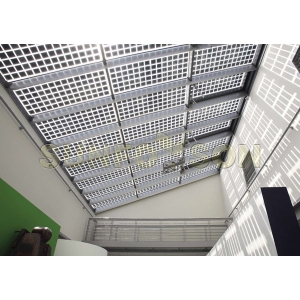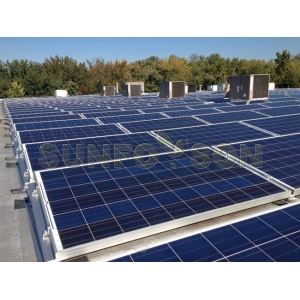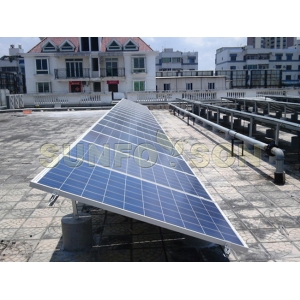In 2012, influenced by the anti-jamming cases
of photovoltaic in China and Europe, China’s photovoltaic industry suffered
huge losses. A large number of enterprises went bankrupt and nearly 300,000
employees were affected. It was a stricken world, and the competitive advantage
no longer existed. The installed capacity is 4.28 GW. In order to save the
development of the photovoltaic industry, the country subsequently formulated
relevant policies and introduced a fixed on-grid tariff system for photovoltaic
power generation, laying the foundation for opening the domestic photovoltaic
market. Under the guidance of the policy, the installed capacity of PV in 2013
was 12.92 GW, with a growth rate of up to 200%.
In 2017, China's newly added photovoltaic
capacity reached 53.06 GW, accounting for 54% of the world's new installed
capacity, and completed the “13th Five-Year Plan” ahead of schedule. The
cumulative installed capacity has reached 130.25 GW, photovoltaic power
generation has reached 110 billion kWh, accounting for 1.7% of the annual power
generation, and new power generation has exceeded 60 billion kWh, which has
made a significant contribution to the country’s energy transformation.
In terms of geographical distribution, the
development center for photovoltaic has also gradually shifted to the eastern
region. In 2016, there were 9 provinces with newly installed capacity exceeding
1GW. By 2017, the newly installed capacity in the northwest region was 9.74 GW,
accounting for about 28% of the country. The new installed capacity in East
China was 16.67 GW, accounting for 27.7% of the country; the newly installed
capacity in Central China was 10.64 GW. It accounts for 20% of the country; in
sharp contrast, the newly installed capacity in the northwest is only 0.062GW,
which is a decrease of 36% compared with the same period of last year. Perhaps
the photovoltaic power station in the western region has already become
saturated, and the market structure is also from the ground-type power station.
Turn to distributed photovoltaic.
Photovoltaic
power generation has not only changed the traditional energy structure and
effectively alleviated the problems of energy shortage and environmental
pollution, but also contributed to China's economic development. Photovoltaic
power generation has effectively promoted the integration of the eastern and
western regions. The rise of photovoltaic companies in the western region has
promoted local economic development and has made significant progress in
improving people's livelihood. Through the PV Poverty Alleviation Project, it
has reached the precise service of 1.5 million farmers and has also become an
effective measure for poverty alleviation in various regions.















